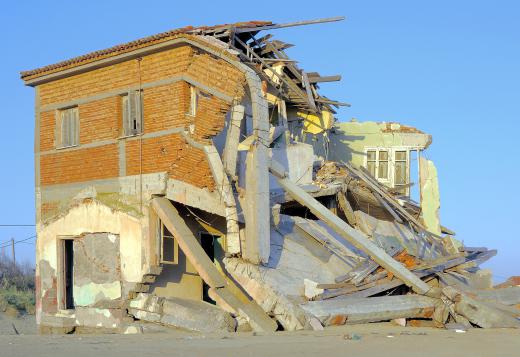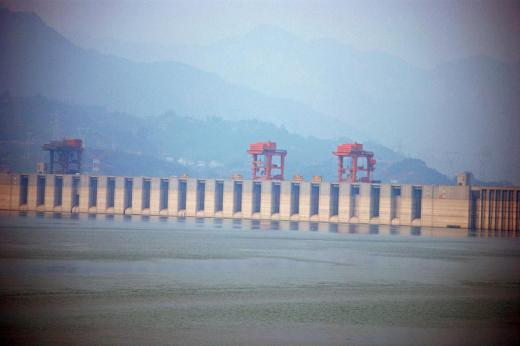What are Earthquake Hazards?
 Jessica Ellis
Jessica Ellis
Earthquake hazards are the myriad dangers associated with the occurrence and aftermath of an earthquake. Some earthquake hazards are directly caused by the seismic event, such as ground faulting or liquefaction. Others are man-made dangers that are improperly secured or unsafe, and may cause damage to surrounding areas if an earthquake occurs. In areas where earthquakes are common or likely to occur, it is important to understand what hazards may exist, and how to best avoid them in order to stay safe during a seismic event.
An earthquake is a geological event that occurs when large pieces of the earth's crust, called tectonic plates, shift or move suddenly. The resultant shaking is the effect of the tectonic plates grinding against one another during this movement. Although the shaking in and of itself is rarely dangerous, the movement of the ground can destabilize surface construction, and even suddenly change the topography of the land itself. Many earthquake hazards concern the effect of shaking on man-made structures, such as buildings, dams, and pipelines above or around the epicenter of a quake.

Major earthquake hazards include building collapse due to improper structure support, landslides or sinkholes created by an unusual mixing of soil and water during and after the quake, floods caused by the destruction of natural or man-made dams, and fire. In earthquake areas, it is extremely important for city planners and architects to understand the geographic topology of the area in order to lessen the potential for catastrophic damage due to an earthquake. Avoiding placing structures atop major fault lines, utilizing advanced building techniques, and creating gas and electricity systems that can automatically shut off during an seismic event can reduce the possibility of major earthquake hazards.

Not all earthquake hazards exist on such an enormous scale. Even the interior of a family home can become a dangerous landscape during and immediately following seismic events. Tall furniture, such as dressers, wardrobes, and shelving units, can all fall during severe shaking, creating obstacles and even potentially injuring inhabitants. Glass picture frames or mirrors can easily shatter during a quake, sending sharp pieces flying and littering the ground with dangerous shards. Earthquake-proofing residences is an important part of safety procedures in areas where quakes are common. Furnishings should be secured to walls, and a hazard-free escape route should be established to allow easy escape if necessary.

Preparation is often key to remaining safe during any disaster, including earthquakes. Seismic events can occur at anytime, anywhere, and without warning. Although the sudden violence of the earth cannot always be predicted, avoiding earthquake hazards is often possible through proper planning and precaution.
AS FEATURED ON:
AS FEATURED ON:

















Discuss this Article
Post your comments